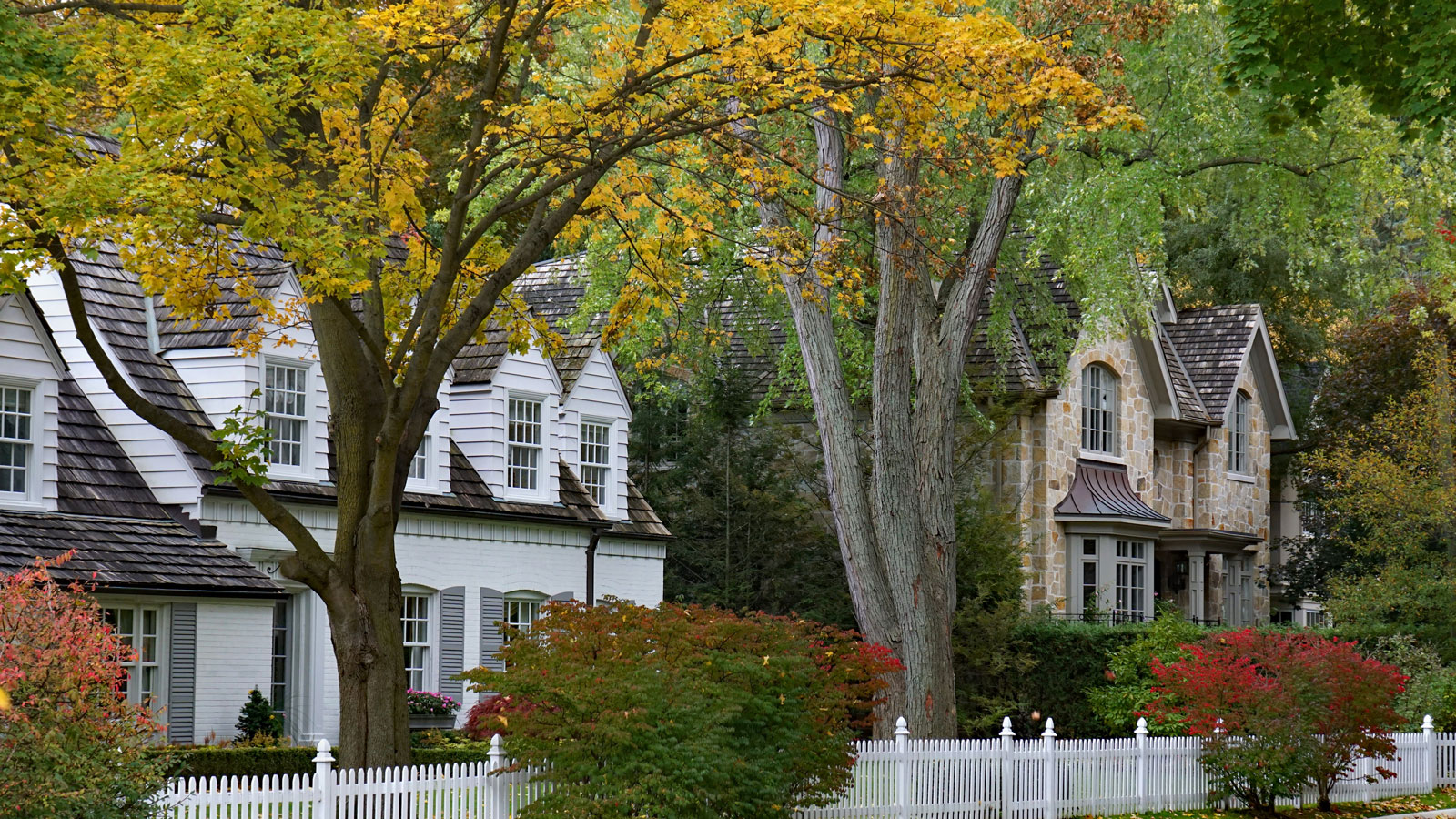
There’s nothing more satisfying than planting a tree in your yard and watching it grow over the years to enhance the landscaping around your property. But it's essential you choose your tree carefully, making sure it will suit the available space and not potentially cause problems later on.
As well as checking out your tree's mature dimensions to work out how it will shape up in 10 or 20 years time, don't forget to avoid fast-growing varieties or those likely to have a particularly strong (and thirsty) root system that requires high volumes of water.
It's also important to take into account site considerations such as the make-up of the soil where your are proposing to plant your tree. If your tree sucks up water this can cause the surrounding soil to shrink, particularly if it's a heavy clay soil, which can result in damage to both the walls and foundations of your property, as well as the drains. It's not just the roots either, with branches of trees planted too close to your house causing damage to roofs and guttering too.
When making your choice you will also want to factor in the best trees for privacy and screening, particularly if you live in an urban area, while at the same time making sure your views out to the yard are not obscured. There's a lot to weigh up, however, our expert guide on which types of trees to avoid planting close to a house should make your decision an easier one.
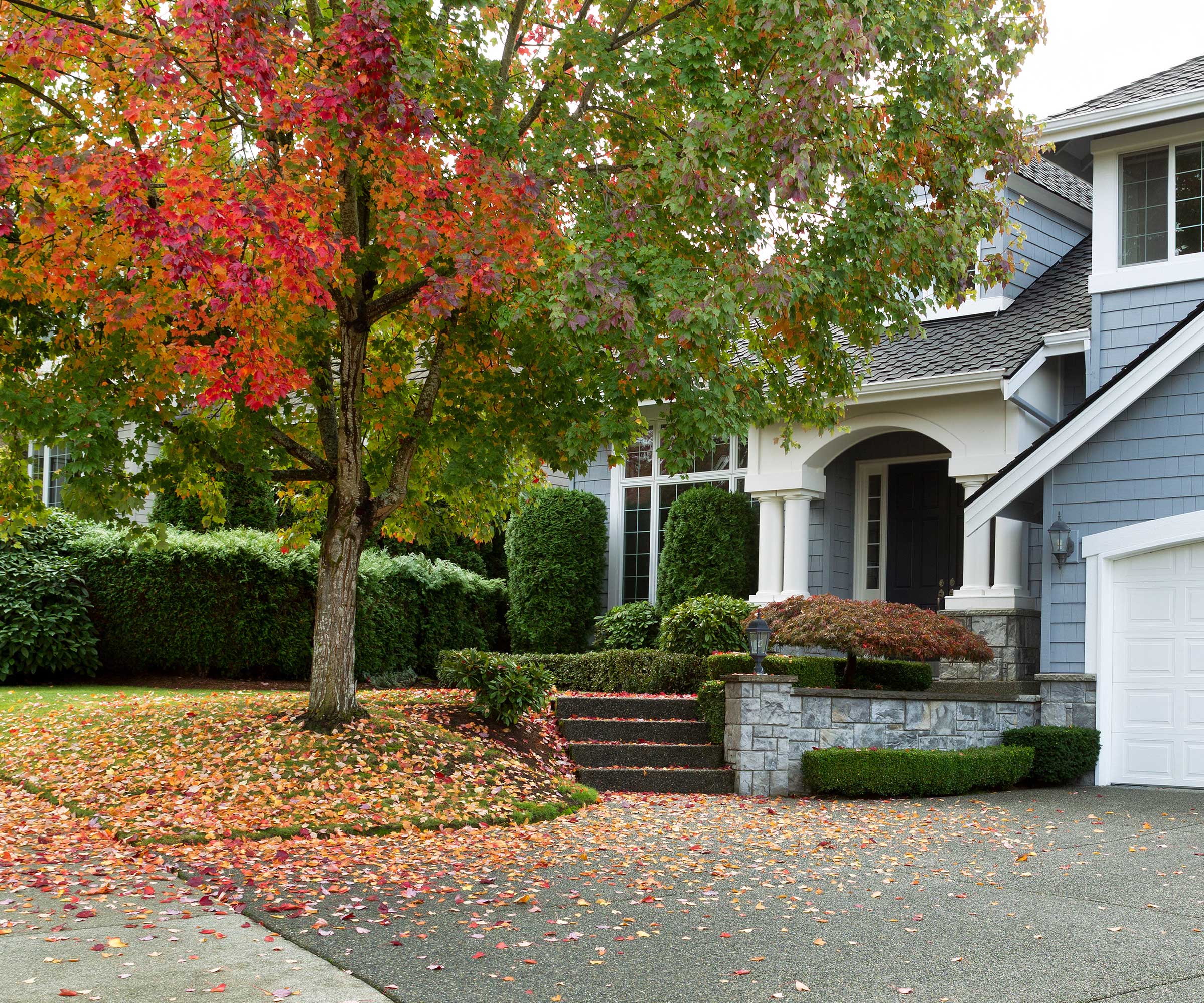
The trees to avoid planting close to a house
If a tree grows huge, is likely to develop a big canopy (which equals a big root system) or grow branches that are prone to snapping off in high winds. This means it's not a good idea to plant them close to your house because of the potential damage they might cause to the foundations, roof and windows.
At the same time, remember there are many trees that you can grow near buildings that don't cause any damage, so don't forget to look at our guide on the the best trees to plant close to a house, too.
1. Weeping willow
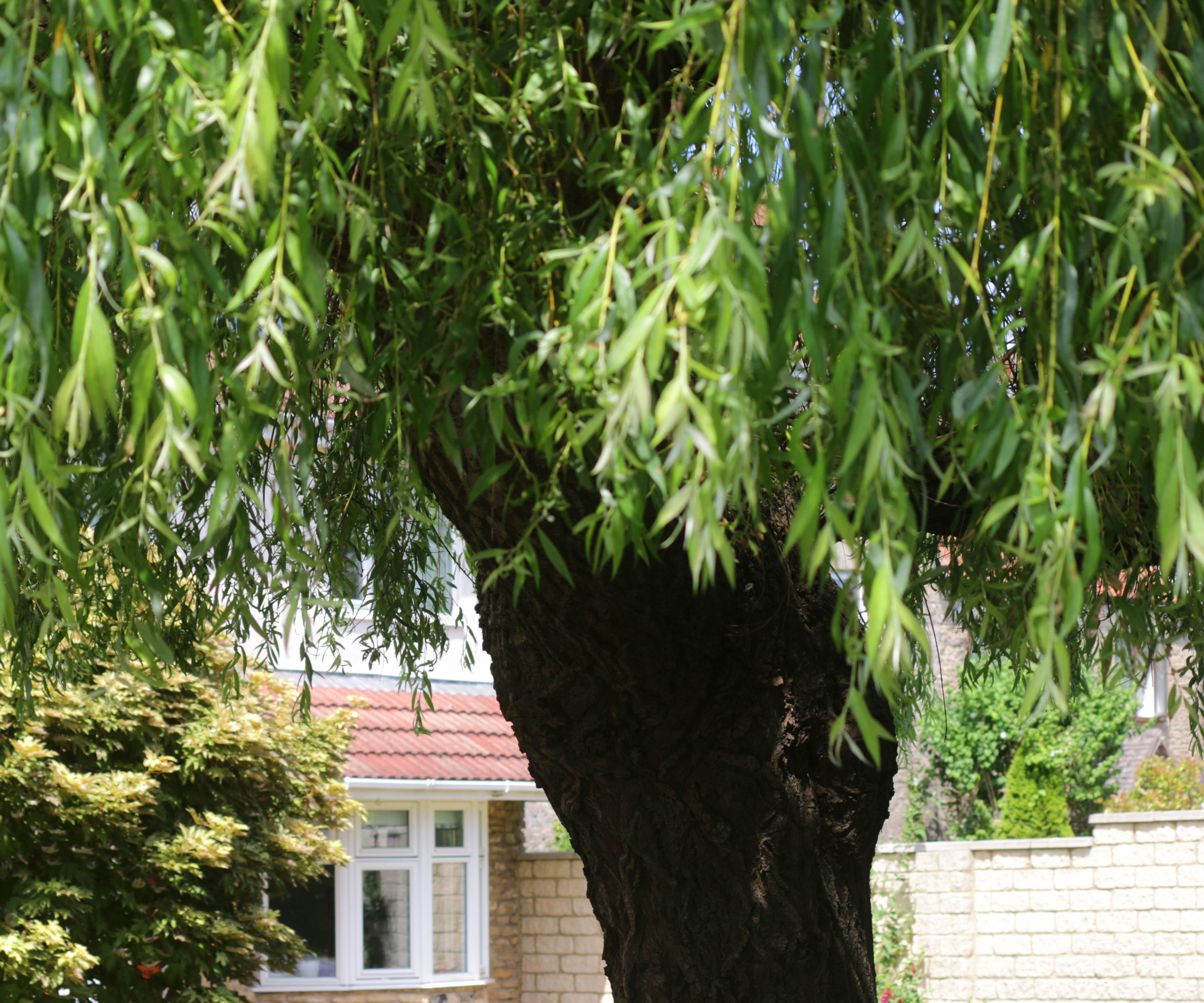
USDA zone: 2-9
Height: 50 feet
Botanical name: Salix babylonica
There's so much to love about the softly cascading branches of this stunning ornamental tree, but if you're tempted by its good looks and easy-going nature it really is a case of heeding the advice of 'right plant, right place'. Invasive roots? Tick. Great at blocking light? Tick. Likely to swamp your house? Tick.
'The weeping willow tree, with its graceful, cascading branches, is known for its rapid growth rate and extensive root system,' says Florida-based tree expert Alex Kantor. 'Its roots can grow up to three times the length of the tree and have the potential to invade underground pipes, such as sewer lines, causing damage over time.
'Additionally, this tree has a large canopy that can block sunlight and create excessive shade in the surrounding area. This can also impact the growth of other plants near your home.'
If you have plenty of room in your yard, think about adding a weeping willow to your landscape as it's one of the best trees for shade. Just make sure it's not near the house.
2. Oak
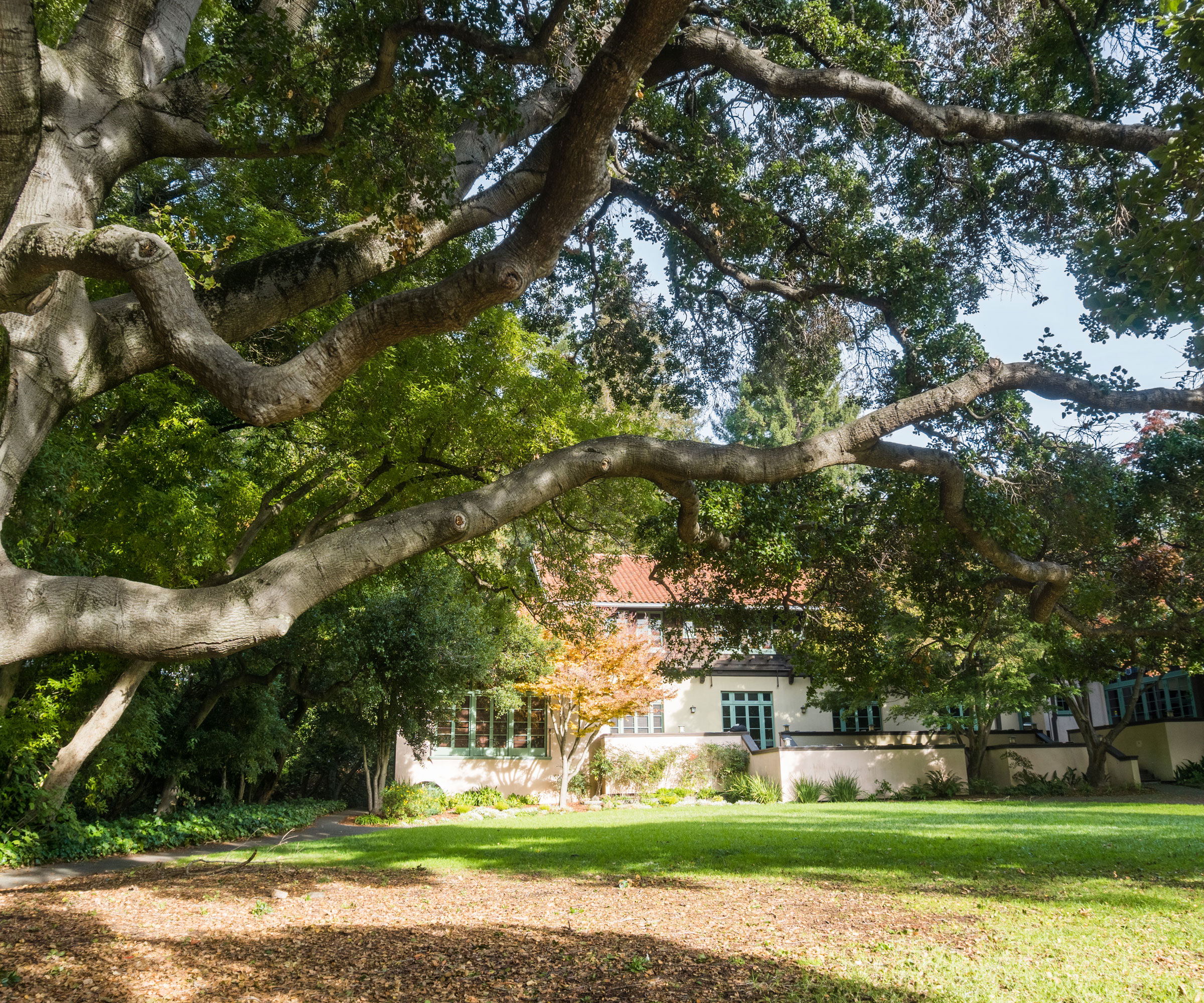
USDA zone: variable, from 3-10
Height: up to 100 feet
Botanical name: Quercus
There are many different varieties of beautiful oak trees to choose from but they all have one thing in common: they grow extremely tall. This means it's never a good idea to plant one near your house. Especially as they guzzle tons of water too.
'Oak trees are perhaps the most important tree in our landscape but should never be planted close to a home,' says Houston-based garden expert Jen McDonald. 'A mighty oak can grow up to 100 feet tall, which means they have an extensive root system that could do serious damage to your foundation.
'In addition, you run the risk of clogging gutters with branches, leaves and debris. Squirrels may also find their way to your roof, with easier access to entry points into the home.'
3. Leyland cypress
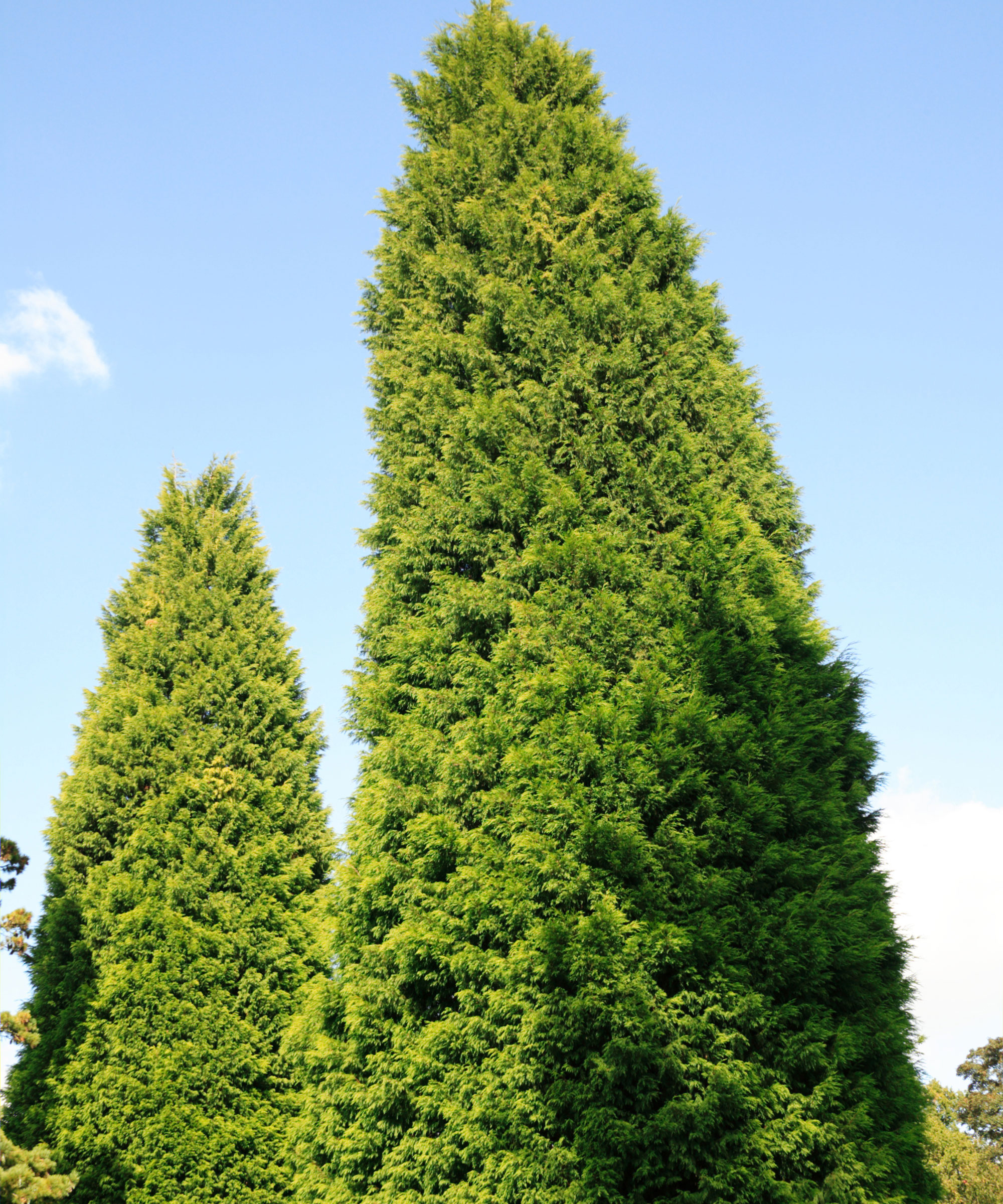
USDA zone: 6-10
Height: up to 70 feet
Botanical name: Cupressus x leylandii, Chamaecyparis x leylandii
This fast-growing coniferous evergreen tree tends to be a go-to in urban gardens for hedging and screening due to its dense growth and columnar habit. For this reason it's on our list of best front yard hedges for privacy.
Leyland cypress trees can reach great heights very quickly. In fact, it's one of the fastest growing conifers, and often towers over houses and gardens, becoming difficult to control and blocking light. For this reason it's also generally at the top of everyone's list when it comes to trees to avoid planting close to a house too.
It's not the only evergreen offender though. 'Varieties of tree that I would advise against planting near your home are any large evergreens,' says New York-based landscape designer Jonathan Fargion. 'They put your home in perennial shade since they don't lose their leaves or needles. As well as leyland cypress, other varieties to avoid include Japanese cedar, Douglas fir, white pine, Norway spruce, and blue spruce.'
4. Silver maple
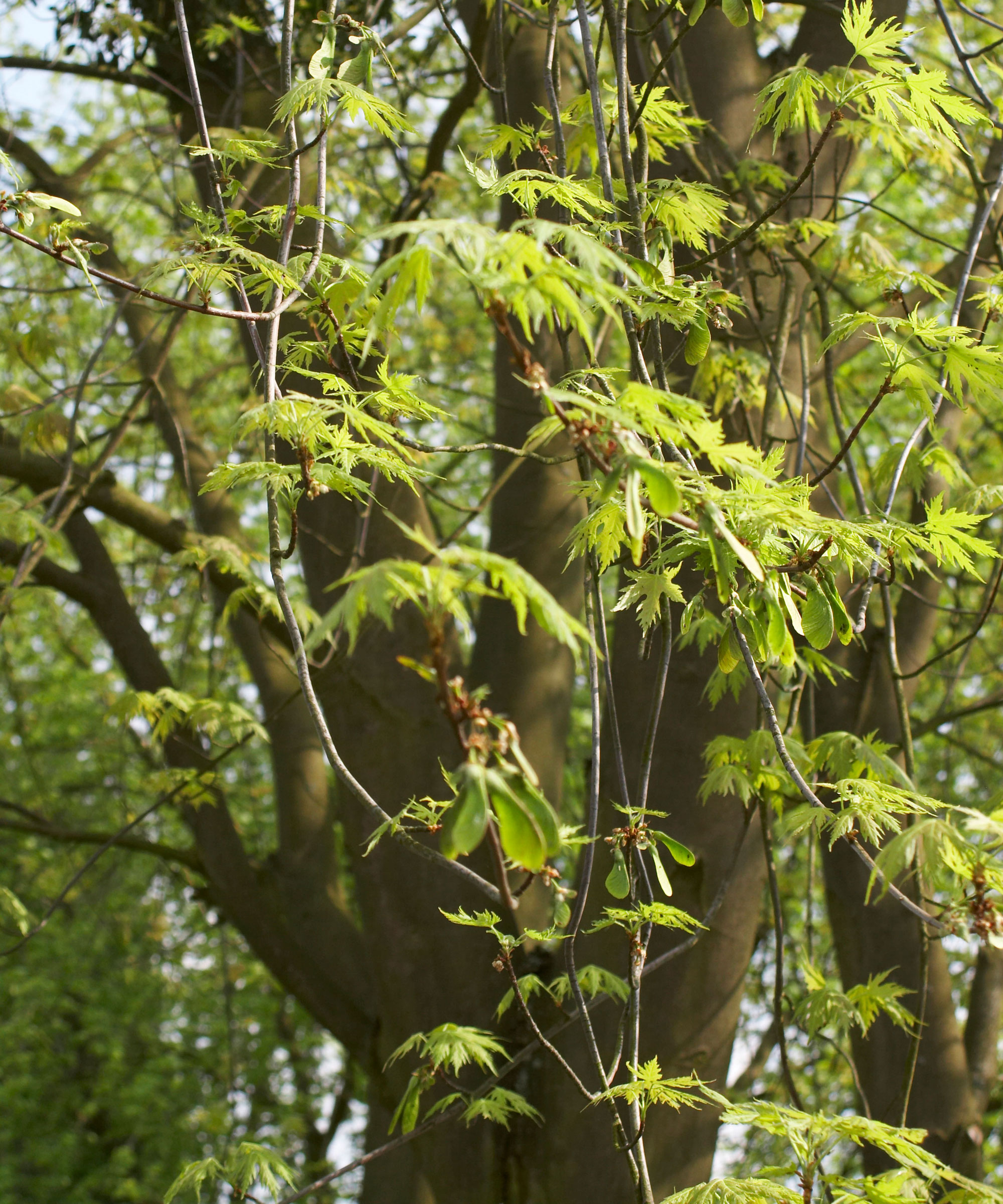
USDA zone: 3-9
Height: up to 70 feet
Botanical name: Acer saccharinum
Silver maple is a tall, fast growing tree that's usually found growing in open sunlight along creeks and waterways. Its common name is on account of the silvery-white undersides of the leaves, which turn golden yellow in fall.
'With classic maple-like leaves and lovely fall color, the silver maple is a beautiful tree that's native to eastern North America,' says tree expert Fern Berg. 'Unfortunately, the shallow and aggressive root growth of the silver maple makes it a poor choice of tree to grow next to sidewalks or buildings, including your home.
'Additionally, the fast growth rate of the silver maple makes the wood quite brittle and prone to breakages and storm damage.' This means it could potentially cause damage to your home too.
So, while the silver maple is a lovely specimen or shade tree if it has the room to grow, it is best planted well away from your house or other built structures.
5. Bradford pear
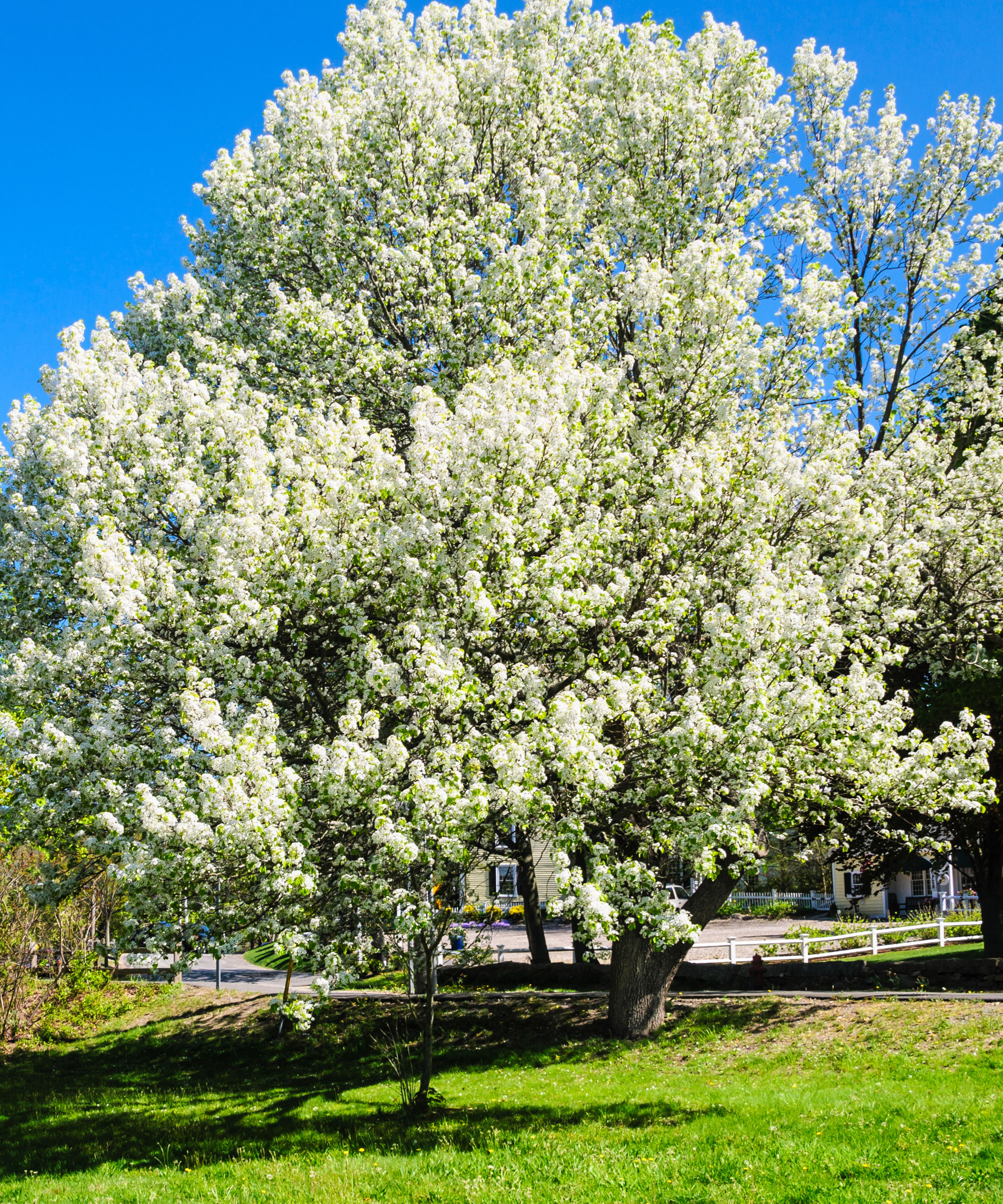
USDA zone: 5-9
Height: up to 50 feet
Botanical name: Pyrus calleryana 'Bradford'
The Bradford pear was once a popular urban landscaping tree but has now fallen out of favor with urban planners, arborists and environmentalists alike due to its invasive nature and tendency to out-compete native plants. These trees can grow up to 50 feet tall, quickly overshadowing your house.
There are plenty of reasons to put a big tick next to this one when you're making a list of trees to avoid planting close to a house.
'Notorious for shallow rooting and shedding branches, the flowering Callery pear tree (as it's also known) is a popular choice for new developments and a well-known thorn in the side of arborists who have to clean up the mess these trees leave when they grow large,' explains master arborist Blake Watkins.
'This variety is grafted onto an aggressive root stock that makes them very tough but also means that even a small tree can have large, shallow roots that cause damage,' explains Blake.
The Bradford pear has very brittle wood, making it susceptible to branch breakages in high winds and storms, resulting in significant debris and falling branches that can be a danger to both you and your home.
Still not convinced? 'While the tree is a lovely sight in full flower, with branches densely covered by white flower blossoms, the smell of the flowers is often compared to rotting fish or urine,' says Fern Berg.
6. Ash
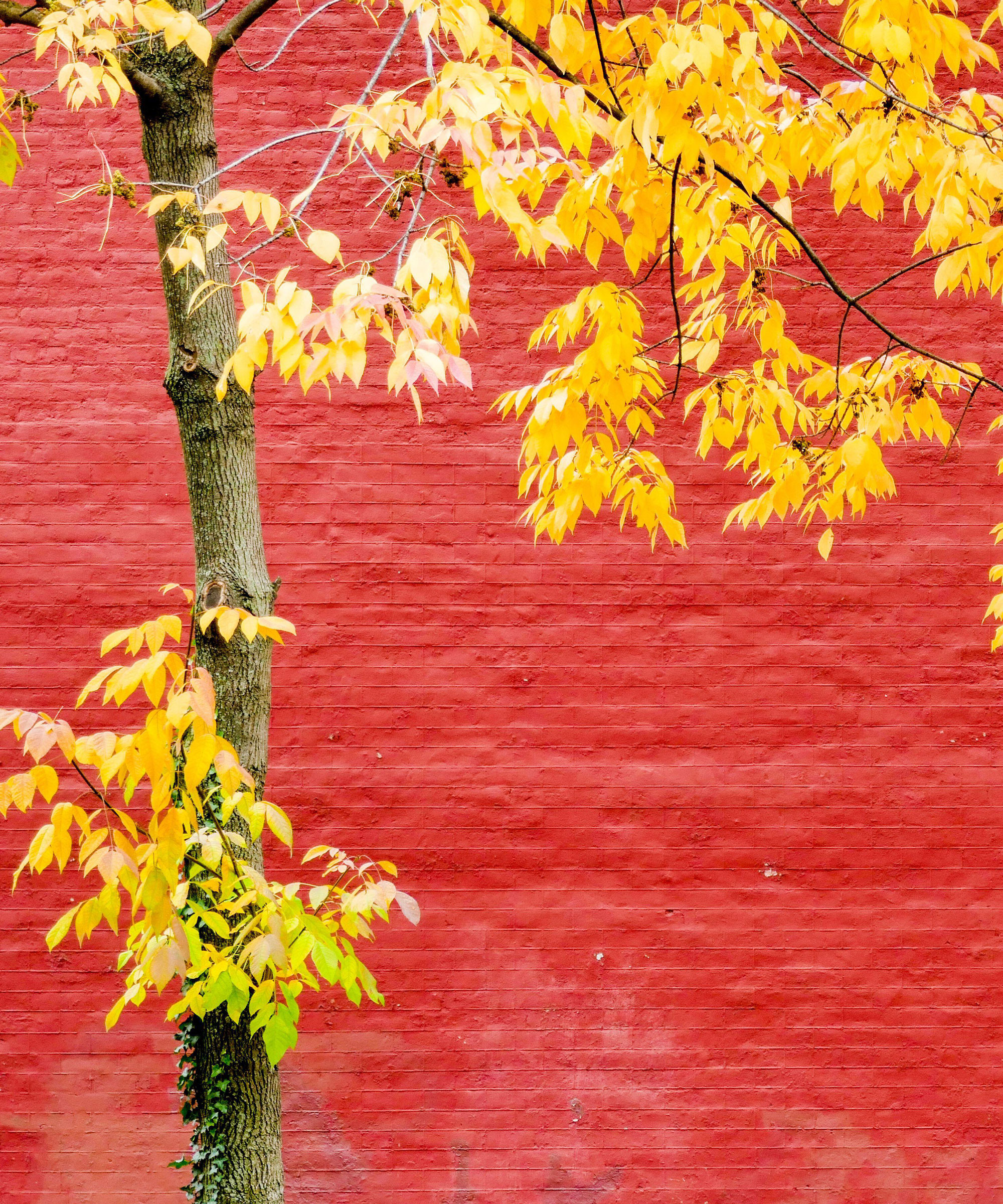
USDA zone: 3-9
Height: up to 80 feet
Botanical name: Fraxinus
The ash genus is one of the largest genera of trees in North America, and were once widely planted as street trees. Some of the more common varieties of ash tree include white (Fraxinus americana), black (Fraxinus nigra), green (Fraxinus pennsylvanica) and blue (Fraxinum quadrangulata), as well as California, Carolina and European types.
Unfortunately ash trees are now widely threatened by the emerald ash borer, a beetle that has destroyed millions of them. This means it's not currently a good planting choice for your yard. Not only this, there are other issues if you're thinking of using one in your landscaping.
'Ash trees should never be planted close to a house,' explains Jen McDonald. 'Their root structure is extensive and the roots spread laterally up to 30 feet. Those thirsty roots will do just about anything to find a reliable water supply, even breaking sewer lines. In addition, the ash tree can grow very tall.'
The size of a root structure and sprawl is similar to the size of the tree canopy adds Jen, and ash trees have huge tree canopies so should be planted at least 30 feet away from your home if you do decide to add one to your yard.
7. Summer Red maple
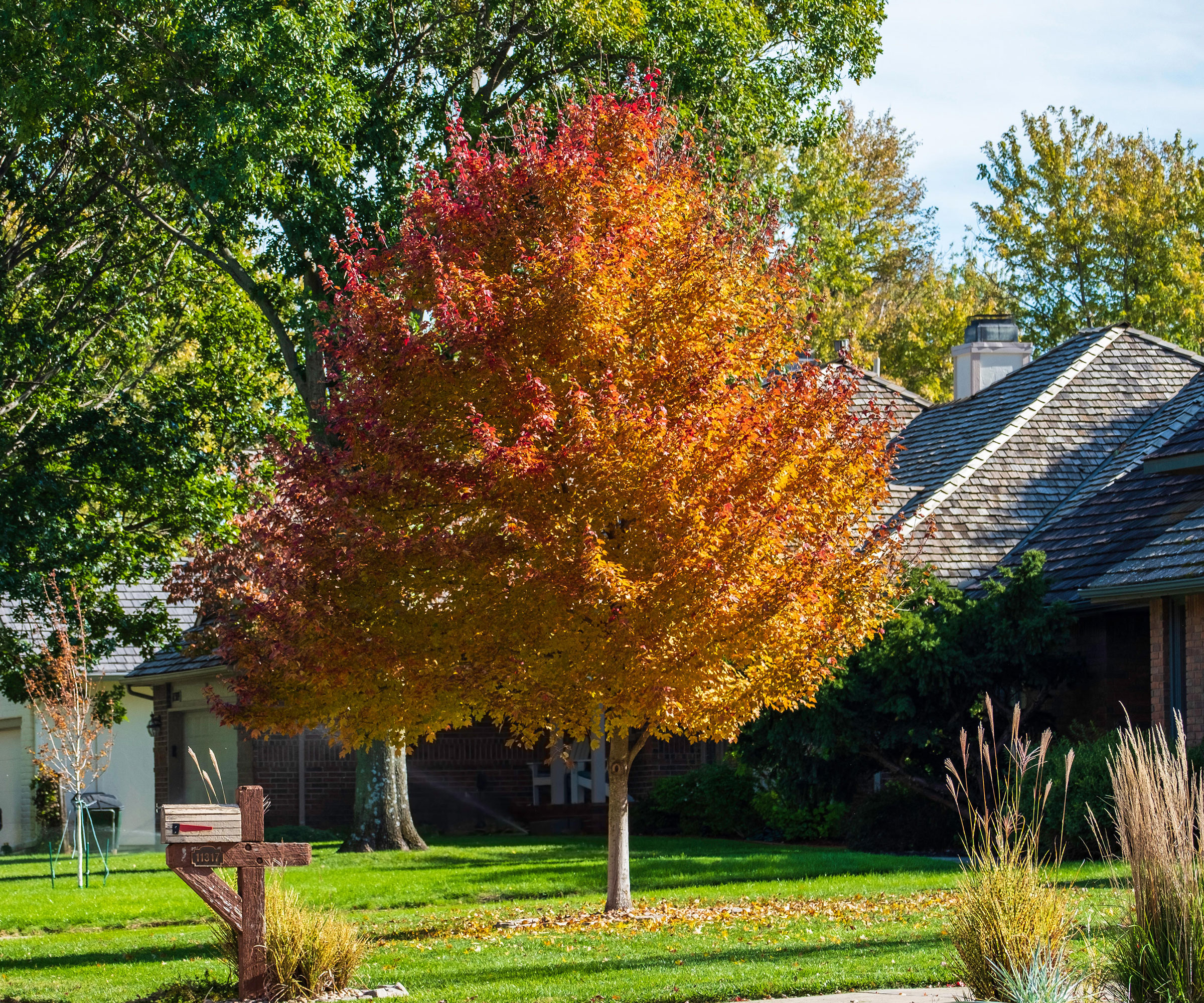
USDA zone: 3-9
Height: up to 40 feet
Botanical name: Acer rubrum 'Summer Red'
'The summer red maple is a beautiful ornamental tree with vibrant red foliage during the summer season,' says Alex Kantor. 'However, its aggressive root system can be problematic when planted too close to a house.'
The roots of the summer red maple have the potential to damage foundations, driveways, and pathways, explains Alex, as they often grow near the surface and can cause cracking or lifting of structures. This means summer reds are best planted on a lawn as a shade tree (in fact, it makes it on to our list of the best trees for shade), or as a richly-colored avenue along a driveway or property line, as long as it's not close to a house.
This is a fast-growing tree. In perfect conditions, it can add 6 feet of growth in a year. Don’t make the mistake of planting it with insufficient space. It's always a good idea to plant it at least 20 feet from your home.
8. Silk acacia
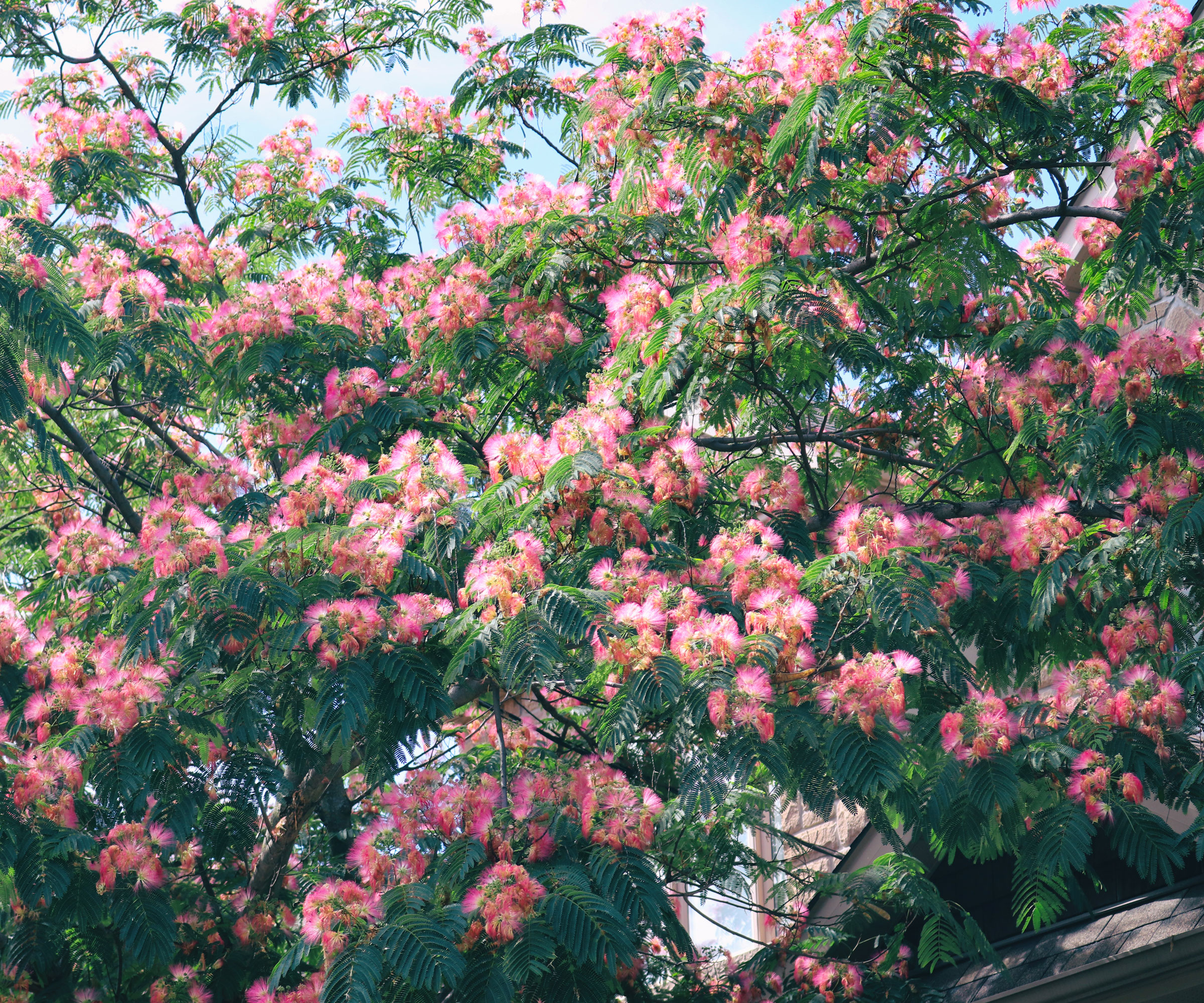
USDA zone: 6-10
Height: up to 50 feet
Botanical name: Albizia julibrissin
The non-native mimosa tree, known by a variety of names including silk acacia, Persian silk tree and pink silk tree, is another one to avoid. While it may initially appear as a visually striking option, it's important to be aware of its invasive nature and potential damage to the ecosystem in many parts of the US.
It's tempting, however, as this ornamental tree is a real beauty. Covered with pink blooms from May to July, the flowers are delicate with clusters of long silky pink threads, while the leaves have a pretty fern-like appearance. It will attract butterflies, bees, and hummingbirds too.
It's a fast-growing tree that can add as much as 5 feet in a season, often reaching heights of 50 feet, in the process suffocating native vegetation. The tree grows hundreds of seed pods, and every one of them germinates somewhere, even in cracks in your pathways. Plant one mimosa in the yard, and soon every house in the neighborhood will have two or three of them coming up.
If you're set on one, instead of planting it near your house use it as an accent plant to showcase its ornamental beauty, either in the middle of your landscaping or to line a driveway. Choose a weeping variety that doesn't get too tall such as 'Rosea' available here at Nature Hills, and keep a close eye on collecting up those seed heads that will appear everywhere.
FAQs
Why do tree roots cause problems?
Tree roots can be problematic if a tree is planted too close to your house and there is a long period of dry weather. During drought conditions the soil below the foundations of a house can dry out and this causes the soil to shrink. The tree roots seek out water and can grow beneath the foundations of the house and into drains to do so, causing damage like cracking and movement in the process.
Trees that need a lot of water are likely to be the worst offenders and are the main trees to avoid planting close to a house. These include oaks, willows and conifers, as covered above, as well as eucalyptus and poplars.
How close to a house is it safe to plant a tree?
If you're planting a tree that will have a mature height of 30 feet then the tree should be planted at least 60 feet away from the house. So the formula is to double the mature height of the tree to get the correct planting distance from the house.
As a general rule, small to medium trees with non-invasive root systems are best to plant close to your house to avoid any potential damage to the foundations. Find out how to plant a tree for a more detailed step by step guide.
You can always play safe by finding out the best trees to grow in pots, especially if your yard is on the small side. This means you can also grow varieties of tree that wouldn't usually suit the growing conditions in your hardiness zone, as trees in pots can be moved under cover in winter.







